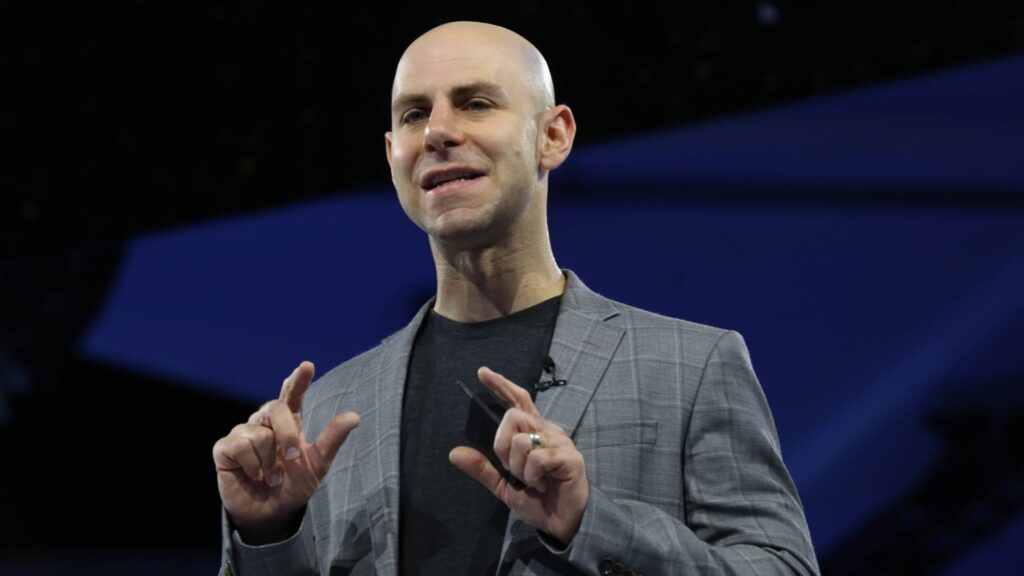Traditional job interview methods that have a candidate tell, rather than show, their strengths may be responsible for employers “missing diamonds in the rough,” says Adam Grant. Instead, he says, interviewers should try incorporating two steps to assess a candidate’s true potential and fit for the job.
Grant, a bestselling author and organizational psychologist at the Wharton School of the University of Pennsylvania, shared tips for improving the interview process while speaking at WOBI’s World Business Forum in New York City on Nov. 5.
He cited research that “how well somebody does a job is not indicated by how the first interview goes, it’s how much growth they show from the first interview to the second.”
Of course, hiring teams don’t always have the time or resources to give everyone a second chance if they flub the first interview. But Grant shared an alternative that still affords candidates a do-over without requiring the hiring team carve out time for another interview.
“Even if you could pause an interview halfway and say, ‘Hey, I’ve got a couple of notes for you,’ and then watch the motivation and ability to grow from the first attempt to the second, that is a great window into is somebody excited to get better and also do they have the capability to learn the skills that you’re trying to get them to excel at.”
Besides giving feedback and a chance to improve if candidates have a rocky start, Grant includes a task in the interview that’s part of the actual job to see a person’s skills and potential in action.
‘I have been guilty of this’
Grant shared a personal anecdote of how he almost missed out on hiring a top performer because of his own approach to interviewing applicants. Before becoming an organizational psychologist, he led an advertising team and was hiring salespeople. He recalled one candidate who seemed to be “the worst fit for sales imaginable” based on his resume.
Grant was desperate to fill the role so he interviewed the applicant regardless, but remained unimpressed. He told the company’s president the candidate wouldn’t be good for the role because he never made eye contact during the 45-minute interview.
“I didn’t know a thing about neurodivergence then,” Grant noted.
The company’s president responded, “You realize this is a phone sales job, right? There is no eye contact in this job.”
Grant suddenly realized he’d been so focused on confirming his belief that the candidate was a poor fit, and he learned a lesson.
“I realized I had to reboot our hiring process,” he said. “If you want to gauge somebody’s potential, the best thing you can do is actually give them a challenge that’s really part of the job and watch how they handle it.”
So he brought all of the candidates back and asked them to sell him a rotten apple. Grant chose that because all of the candidates would be familiar with an apple, so it would level the playing field, and because “if you could get me excited about a rotten apple, you could definitely sell our products,” he said.
The candidate Grant had frowned upon before dove right in with his sales pitch.
“This may look like a rotten apple; it’s actually an aged, antique apple,” Grant recalled him saying. “You know the saying ‘An apple a day keeps the doctor away?’ Well, because of the nutrients in the aging process, you only need to eat one of these a week. And then afterwards you can plant the seeds in your backyard.”
Though Grant joked he had “some serious honesty and integrity questions” about the candidate, he hired him, and the man ended up being the best salesperson on the team.
“What I learned from that story was not just that I needed to see him in action to gauge his potential,” Grant said. “But also, I needed to give him a do-over.”
Want to level up your AI skills? Sign up for Smarter by CNBC Make It’s new online course, How To Use AI To Communicate Better At Work. Get specific prompts to optimize emails, memos and presentations for tone, context and audience.
Plus, sign up for CNBC Make It’s newsletter to get tips and tricks for success at work, with money and in life, and request to join our exclusive community on LinkedIn to connect with experts and peers.

